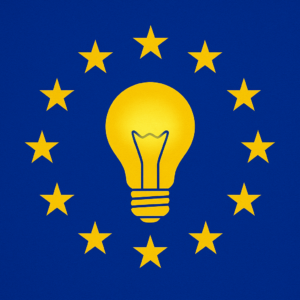Headquarters: Svetog Nauma 7, 11000
Office address: Đorđa Vajferta 13, 11000
Phone:: +381 11 4529 323

Worldwide there is an established awareness of plastic waste’s impact on nature and the concern that leakage of the material is threatening marine life. Many governmental policies were announced internationally in response. Serbia’s reaction, however, has been lacking, and relatively large amounts of plastic litter are subsequently polluting the nation’s environment. The European Commission’s proposed 55% recycling rate target for plastic packaging by 2025, furthermore, shows the level of ambition the country must have if it enters the bloc. Such goals are not unattainable if the nation invests and uses available and inexpensive methods to improve recycling rates.
Nonetheless, Serbia has much work to do to narrow its gap with the Commission’s target. According to the German development agency Deutsche Gesellschaft für Internationale Zusammenarbeit (GIZ), 78% of Serbian plastic packaging waste ends up in nature or in landfills. Serbia’s Fiscal Council reported that in 2015 plastic was the least recycled packaging material at around 19%, with the wider EU rate close to 40%. Serbian municipal waste, which is everyday rubbish that is collected and then managed by local government services, has varied recycling rate statistics. The media reports 3% for 2016 and EU statistics agency Eurostat notes 0.3% in 2018.
Upgrades to Serbia’s plastic recycling infrastructure are subsequently necessary in order to progress, although experts have publicised the financial hurdle Serbia faces. The Fiscal Council in June 2018 argued that, if it wanted to strengthen Serbia’s waste management infrastructure, the government needed to invest €1.5bn over 10-15 years from 2019. The institution argued that this could be done without destabilising the state budget. Similar proposals were made by Stanište, a Serbian NGO, which in December 2019 assessed that Serbia’s investment in the environment was between 0.25% and 0.7% of GDP in the previous nine years. It argued that this figure should actually have been closer to 2-3% if Serbia intended to implement relevant EU legislation.
Goran Trivan, minister for the environment, said in November that the ministry’s budget in 2020 would increase from that of 2019, with recycling funds benefitting the most with a rise to 3.5bn dinars (€29.7m). Calculating if this growth will meet the Fiscal Council and Stanište’s proposals is difficult. However, the ministry’s entire budget for 2020 represents only 0.16% of the 2018 GDP (2019 figures were not released at time of publishing). While the ministry does not account for all environmental and recycling spending, this level of expenditure is low enough to indicate that the state’s overall investment in the environment and, consequently on recycling, could still be too little.
Figure 1

Loading…
*2020 ministry spending compared to 2018 GDP.
Despite the considerable investments still needed to improve Serbia’s waste infrastructure, the government also has inexpensive alternatives at its disposal. For instance, Serbia is working toward bans of single-use items and bags made of plastic. It should now monitor plastic tax proposals in Italy, the UK and the EU as a whole. Such policy could, if successful, deter end users from using virgin (unconsumed) plastic, incentivise firms’ use of recycled products and generate revenue for the government.
The state could produce more immediate results at a low cost by focusing on public education too. In a UN Women survey for Serbia in 2018, absence of information was frequently highlighted as an obstacle to recycling. This pinpoints the importance of governmental communication, which could be used to lessen the country’s dependence on its inadequate waste management system or improve its disposal of plastic.
One educational strategy that Serbia could employ would be to emphasise the financial benefits of reducing plastic use to its citizens. It could be effective to inform them that higher-quality products containing less plastic can have long life expectancies. This means they can be more cost-effective purchases over time than initially inexpensive alternatives. The state would gain as well if it discouraged the unnecessary use of plastic in order to minimise the amount of waste it has to recycle. It should dissuade the public from using numerous plastic bags to carry fruit and vegetables to a shop’s till, for example. The government, finally, should inform its population on where, how and what to recycle. It could partly achieve this by creating an easily accessible and regularly-updated internet site that dispenses information for the whole nation.
These approaches all complement each other and would together decrease the amount of plastic ending up in nature or landfills. Even if investment is needed in infrastructure to boost recycling capabilities and rates, other policies such as focusing on public education would help relieve some pressure on waste systems too. Serbia should subsequently tackle its plastic pollution problem by using all available methods harmoniously in order to radically limit ongoing damage to our environment.